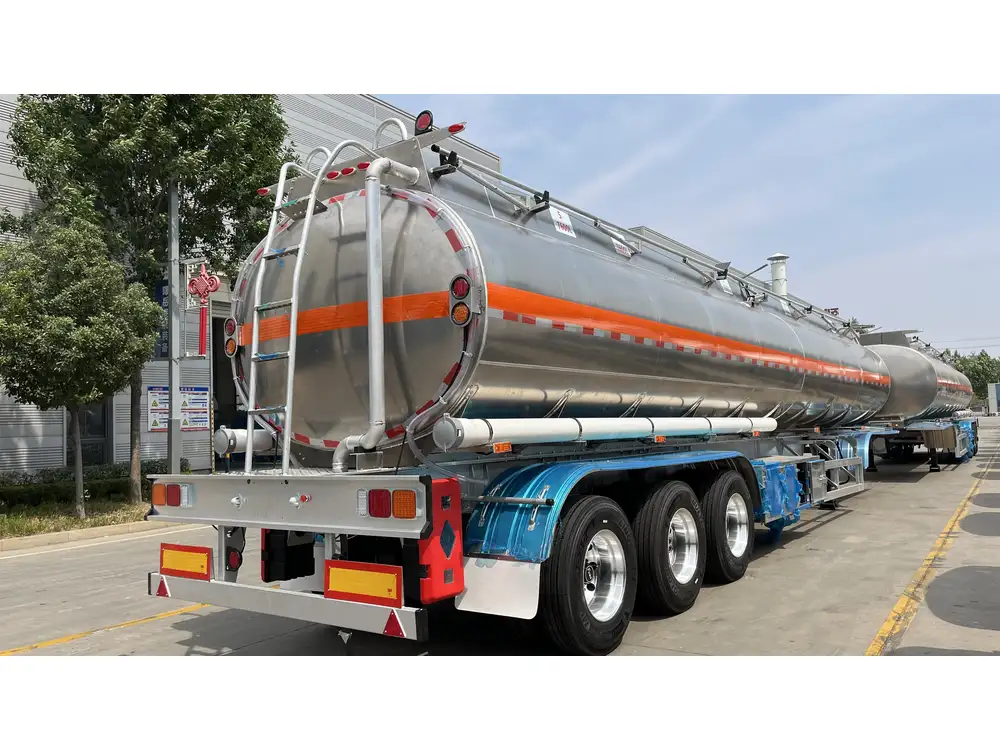When managing a fleet of belly dump trailers, ensuring the longevity and efficiency of each trailer is paramount. One of the most critical maintenance tasks involves checking and managing the oil levels. Knowing how to check the oil in a belly dump trailer properly can prevent operational failures and costly repairs. In this guide, we present a structured approach to proficiently check oil in belly dump trailers, optimize maintenance schedules, and enhance overall performance.
Understanding Belly Dump Trailers
Before we delve into the intricate process of oil checking, let’s briefly summarize what belly dump trailers are. Belly dump trailers are specialized hauling vehicles designed for the efficient transportation of bulk materials such as sand, gravel, and dirt. They feature a unique design that enables them to discharge materials through a designated opening on the underside, making them perfect for construction, mining, and agricultural applications.
Components of a Belly Dump Trailer
- Tandem Axles: Provides support and distributes the weight evenly.
- Hopper: The container where materials are loaded.
- Discharge Gate: Mechanism for releasing materials.
- Hydraulic System: Powers the operation of the discharge gate and other functionalities.
- Oil Reservoir: Contains the oil required for the hydraulic systems and other moving parts.

Importance of Checking Oil Levels
Oil serves several vital purposes in belly dump trailers:
- Lubrication: Reduces friction between moving parts.
- Cooling: Helps maintain optimal operating temperatures.
- Sealing: Prevents contaminants from entering critical components.
- Corrosion Prevention: Protects metal surfaces from rust and degradation.
Regular oil checks ensure that the hydraulic systems and related components operate efficiently, reducing the chance of mechanical failures and enhancing lifespan.
Step-by-Step Guide to Checking Oil in a Belly Dump Trailer
Required Tools and Equipment
- Clean rag or paper towel
- Oil dipstick (if applicable)
- Oil container (for refilling)
- Funnel
- Personal protective equipment (gloves and safety goggles)

Steps to Check Oil Levels
1. Safety First
Before initiating any oil check, ensure the trailer is parked on a stable and level surface. This measure prevents inaccurate oil readings and potential spills. Engage the parking brake and turn off the trailer engine.
2. Locate the Oil Reservoir
Identify the oil reservoir of the belly dump trailer. Depending on the model, it may be situated near the hydraulic pump or along the chassis. Consult the owner’s manual for precise location details.

3. Check Oil Level on the Dipstick
- Remove the Dipstick: Unscrew or pull the dipstick from the oil reservoir.
- Wipe Clean: Use a clean rag to wipe the dipstick free of oil.
- Reinsert and Remove Again: Insert the dipstick back into the reservoir and then remove it again to check the oil level.
- Read the Levels: Observe where the oil reaches on the dipstick. Most dipsticks have a minimum and maximum marking. Ensure the oil level falls between these two points for optimal performance.
4. Inspect Oil Quality
While checking the oil level, also assess the oil quality:
- Color: New oil is typically amber. If the oil appears dark or black, it may need changing.
- Texture: Rub some oil between your fingers. It should feel smooth and less viscous. Any graininess could indicate contamination.
- Odor: A burnt smell usually indicates that the oil has degraded and needs replacing.
5. Fill Oil if Necessary
If the oil level falls below the minimum mark on the dipstick:
- Select the Right Oil: Refer to the owner’s manual to determine the correct oil type and grade.
- Use a Funnel: To avoid spillage, use a funnel while pouring oil into the reservoir.
- Check Frequently: After adding oil, recheck the level to ensure it meets the desired range.

6. Secure the Reservoir
Once you have finished checking and potentially refilling the oil, properly secure the oil reservoir cap to prevent leaks and contamination.
Maintenance Tips for Belly Dump Trailers
Regular maintenance of belly dump trailers is vital in optimizing operational efficiency. Here are some essential maintenance tips:
- Routine Inspections: Make it standard practice to check oil levels weekly or bi-weekly, depending on usage.
- Keep a Maintenance Log: Document oil levels, changes, and any observations in a maintenance log to track performance over time.
- Schedule Oil Changes: Follow manufacturer recommendations for oil changes, typically every 3,000 to 5,000 miles or sooner if the quality diminishes.
- Hydraulic Hose Check: Inspect hydraulic hoses for leaks or wear regularly, ensuring all connections are tight and secure.
- Test Hydraulic System: Periodically test the hydraulic system for any deviations in performance, as early detection can prevent extensive damage.
Troubleshooting Common Oil Issues
When managing belly dump trailers, users may encounter several oil-related issues. Below are some common problems and potential solutions.
| Issue | Possible Causes | Solutions |
|---|---|---|
| Low Oil Level | Frequent usage, leaks | Check for leaks, refill oil, and schedule regular inspections. |
| Contaminated Oil | Dirt, water intrusion | Replace oil and inspect seals and connections to prevent future contamination. |
| Strange Noises in Hydraulic System | Low oil, air in the system | Check oil level and fill if necessary; bleed the hydraulic system to remove air. |
| Inefficient Discharge Gate Function | Low pressure in hydraulic system | Inspect the hydraulic pump and connections, add oil if necessary, and check for leaks. |

Conclusion
Understanding how to check oil in a belly dump trailer may seem straightforward, yet its significance in the overall maintenance process cannot be overstated. By implementing a consistent oil-checking routine, embracing a proactive maintenance approach, and troubleshooting issues effectively, operators can maximize the lifespan and efficiency of their belly dump trailers. Investing time in regular inspections and being aware of the intricacies of the oil system enhances operational reliability and can significantly reduce downtime in the long run.
By leveraging these insights and strategies, you can ensure that your belly dump trailers remain in peak condition, allowing you to focus on the job at hand without unnecessary interruptions.



